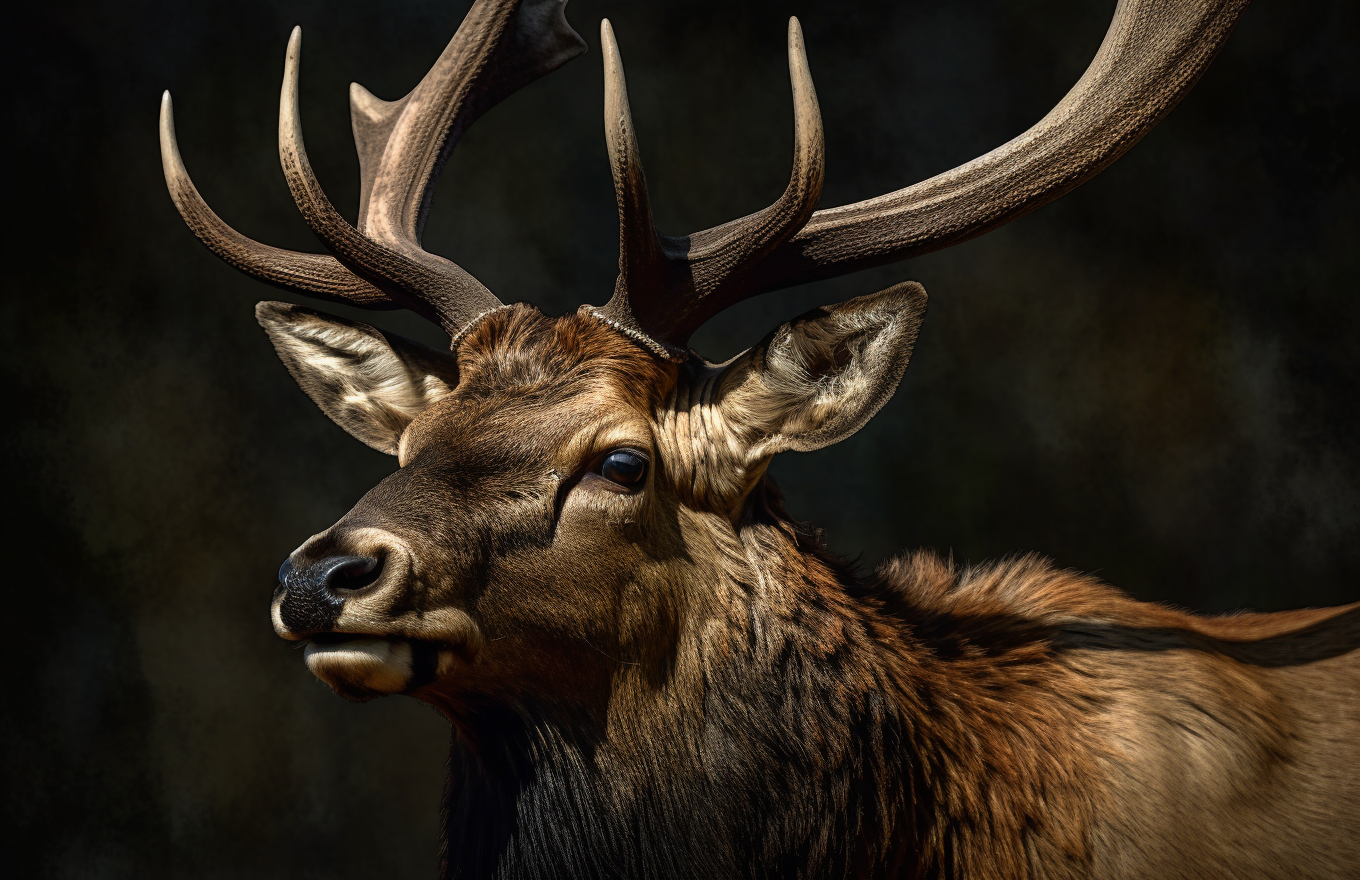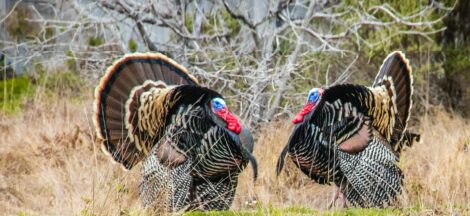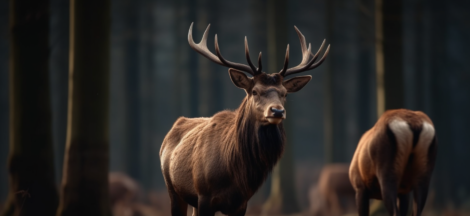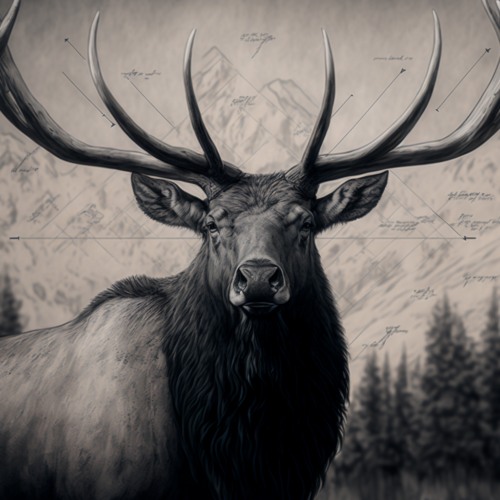Welcome to Elk Hunting 101! If you’re new to the world of elk hunting, you’re in for a real treat. In this in-depth beginner’s guide, we’ll walk you through everything you need to know to get started, from planning your first hunt to enjoying the fruits of your labor. So grab a cup of coffee, sit back, and let’s dive into the exciting world of elk hunting!
Contents:
- Planning Your First Hunt
- Selecting the Right Gear
- Understanding Elk Behavior
- Finding the Perfect Spot
- Mastering Calling and Decoy Tactics
- The Art of Tracking and Stalking
- Field Dressing and Packing Out Your Elk
- Elk Hunting Safety and Ethics
- Choosing Your Hunting Companions
- Preparing for Various Weather Conditions
- Preserving Your Trophy
- Cooking and Enjoying Your Harvest
- Continuing Your Elk Hunting Education
1. Planning Your First Hunt
There’s an old saying that goes, “A dream without a plan is just a wish.” The same holds true for elk hunting. Before you can head out into the wilderness in pursuit of these majestic animals, you’ll need a solid plan in place.
Start by selecting the right time of year for your hunt. Elk hunting season typically runs from late August to early November, with peak rutting activity occurring between mid-September and mid-October. This is when elk are most active and vocal, which can make for an incredibly exciting and memorable hunt.
Next, decide on a hunting location. Choose an area that has a healthy elk population and is accessible to you. Research the area’s terrain, habitat, and hunting regulations, and secure any necessary permits or tags well in advance of your trip. Familiarize yourself with the local wildlife management unit boundaries, as these can impact where you’re allowed to hunt.
Finally, get in shape! Elk hunting can be physically demanding, requiring long hikes, steep climbs, and heavy lifting. The better shape you’re in, the more enjoyable and successful your hunt will be. Begin a training regimen several months before your hunt, focusing on cardiovascular exercises, strength training, and flexibility.
2. Selecting the Right Gear
Elk hunting requires specialized gear designed to withstand the elements and help you navigate challenging terrain. Here’s a list of essential items you’ll need for a successful elk hunt:
- Weapon: Choose a weapon that you’re comfortable and proficient with, whether it’s a rifle, muzzleloader, or bow. Make sure it meets your local hunting regulations and is appropriate for taking down a large animal like an elk.
- Optics: Invest in quality binoculars and a rangefinder to help you spot and judge elk from a distance, and to ensure you take accurate, ethical shots.
- Clothing: Dress in layers to adapt to changing weather conditions, and choose clothing that is quiet, comfortable, and camouflaged to match your hunting environment. Don’t forget to pack a quality pair of waterproof boots, gloves, and a warm hat.
- Backpack: Invest in a durable, comfortable backpack designed for hunting, with plenty of compartments for organizing your gear and enough capacity to carry an elk quarter out of the field.
- Navigation tools: A GPS unit, map, and compass are essential for navigating unfamiliar terrain and finding your way back to camp.
- Emergency supplies: Bring a first aid kit, survival kit, and extra food and water in case of unexpected situations.
- Other essentials: Don’t forget items like a sharp hunting knife, game bags, rope, and a headlamp for those early mornings and late evenings in the field.
3. Understanding Elk Behavior
To be a successful elk hunter, you’ll need to have a basic understanding of elk behavior. Elk are social animals that live in groups called herds. These herds consist of a dominant bull, multiple cows (females), and their offspring. During the rut, or mating season, bulls will bugle and fight to establish dominance and secure breeding rights with the cows in their herd.
Elk are most active during the early morning and late afternoon, making these prime hunting times. They tend to bed down during the day in cooler, shaded areas, and feed in open meadows during the night. Understanding these patterns and habits will help you predict where elk are likely to be, and when to focus your hunting efforts.
4. Finding the Perfect Spot
Locating a prime elk hunting spot can make all the difference in your success. Start by researching and scouting your chosen hunting area well before the season begins. Look for signs of elk activity, such as tracks, droppings, rubs, and wallows. Keep an eye out for food sources like grasses, forbs, and shrubs, as well as water sources that elk will visit throughout the day.
Once you’ve identified areas of high elk activity, set up your hunting spot. Choose a location that offers good visibility of the surrounding area and provides some cover for concealment. Consider factors like wind direction and sun position to ensure you remain undetected by your quarry.
5. Mastering Calling and Decoy Tactics
Learning to call elk can greatly improve your odds of success. Elk communicate through a variety of vocalizations, including bugles, mews, and chirps. By imitating these sounds, you can attract curious or competitive elk within shooting range.
There are several types of elk calls available, including diaphragm calls, open reed calls, and external reed calls. Each type has its advantages and disadvantages, so take time to practice with different calls and find the one that works best for you. Keep in mind that calling elk requires patience and persistence, as well as the ability to read elk behavior and adjust your calling strategy accordingly.
Decoys can also be an effective tool for drawing elk closer. Choose a decoy that looks realistic and is easy to set up and transport. Position the decoy in a visible location, preferably downwind of your hunting spot, and use your calls to create the illusion of an elk herd. Be prepared for elk to approach from any direction, as they may circle downwind to investigate the source of the calls and scent.
6. The Art of Tracking and Stalking
Tracking and stalking elk is a skill that takes time and experience to master, but it’s an essential part of the hunt. When tracking elk, look for fresh signs such as tracks, droppings, and rubs. Pay attention to the direction and size of tracks, as this can help you determine the direction the elk are moving and the size of the animal you’re pursuing. Keep the wind direction in mind, as elk have an excellent sense of smell and will quickly flee if they catch wind of your scent.
Stalking requires a slow, methodical approach. Move quietly and deliberately, taking care to avoid making noise by stepping on sticks or crunching leaves. Use the terrain and vegetation to your advantage, staying low and using natural cover to conceal your movements. Keep an eye on the wind direction and adjust your approach as needed to stay downwind of the elk.
As you get closer to the elk, take time to assess the situation and ensure you have a clear, ethical shot. Remember, patience is key – don’t rush the shot and risk wounding the animal.
7. Field Dressing and Packing Out Your Elk
Congratulations, you’ve successfully harvested an elk! Now comes the important task of field dressing and packing out your animal. Proper field dressing is essential to preserving the quality of the meat and preventing spoilage.
Begin by removing the entrails, taking care not to puncture the stomach or intestines. Next, remove the head and lower legs, and skin the elk. Quarter the elk into manageable pieces – this typically includes the front shoulders, hindquarters, backstraps, and tenderloins. Place the meat in game bags to protect it from dirt and insects, and allow for air circulation to aid in cooling.
Packing out your elk can be a physically demanding task, especially if you’re hunting in rugged terrain. Enlist the help of hunting partners or use a game cart or pack animal to make the task more manageable. Remember to take your time, stay hydrated, and enjoy the fruits of your labor.
8. Elk Hunting Safety and Ethics
As a responsible elk hunter, it’s crucial to prioritize safety and adhere to ethical hunting practices. Follow these guidelines to ensure a safe and enjoyable hunting experience:
- Know your target and what’s beyond: Always positively identify your target before taking a shot, and be aware of the surrounding area to ensure a safe shot.
- Follow firearm safety rules: Treat every firearm as if it’s loaded, keep your finger off the trigger until you’re ready to shoot, and never point your weapon at anything you don’t intend to shoot.
- Practice good communication: If hunting with others, maintain open lines of communication and establish clear zones of fire to avoid accidents.
- Be prepared for emergencies: Carry a first aid kit, survival kit, and extra food and water in case of unexpected situations. Know how to use your emergency supplies and be familiar with basic first aid techniques.
- Respect wildlife and the environment: Hunt only during designated seasons, adhere to bag limits, and follow all hunting regulations. Pack out all trash and leave the environment as you found it.
- Take ethical shots: Ensure you have a clear, well-placed shot that will result in a quick, humane kill. If you wound an animal, make every effort to track and dispatch it as quickly as possible.
9. Choosing Your Hunting Companions
Elk hunting can be a social activity, and the camaraderie of a hunting camp can be one of the most enjoyable aspects of the experience. When selecting your hunting companions, consider the following factors:
- Experience level: Choose hunting partners with similar experience levels or a mix of experienced and novice hunters who can learn from each other.
- Physical fitness: Ensure your hunting partners are physically capable of handling the demands of elk hunting, including long hikes, heavy lifting, and rough terrain.
- Compatibility: Look for individuals who share your hunting values and ethics, and who will contribute to a positive, enjoyable atmosphere in camp.
- Responsibility: Select hunting partners who take safety seriously and are willing to share the workload, from scouting and setting up camp to field dressing and packing out the elk.
10. Preparing for Various Weather Conditions
Weather can be unpredictable, especially in the mountains where many elk hunts take place. To ensure a successful and enjoyable hunt, be prepared for a variety of weather conditions:
- Rain: Pack waterproof clothing, including a rain jacket, pants, and boots, as well as a pack cover to protect your gear. Bring extra socks and clothing to change into if you get wet.
- Snow: Invest in insulated, waterproof footwear, and consider using gaiters to keep snow out of your boots. Layer your clothing to stay warm, and pack a quality, waterproof pair of gloves.
- Wind: Bring a windproof jacket and pants to protect against wind chill, and use a neck gaiter or face mask to shield your face from the elements.
- Extreme cold: In addition to the items mentioned above, pack hand and foot warmers, an insulated sleeping pad, and a sleeping bag rated for low temperatures.
- Heat: Stay hydrated and take breaks in the shade to prevent overheating. Wear lightweight, breathable clothing, a wide-brimmed hat, and sunscreen to protect against the sun.
11. Preserving Your Trophy
After a successful elk hunt, you’ll likely want to preserve the memory of your experience with a trophy. There are several options for preserving your elk, including taxidermy mounts, European mounts, and antler mounts. Each option has its own unique aesthetic and requirements for preparation and care.
To prepare your elk for taxidermy, cape the elk by skinning the head, neck, and shoulders, being careful not to damage the hide. Remove as much flesh and fat as possible, and salt the hide to help preserve it. Transport the cape and antlers to a professional taxidermist as soon as possible to ensure the best results.
For a European mount, remove the head from the carcass and skin it, taking care to remove all flesh, fat, and connective tissue. Boil the skull in water with a small amount of detergent to remove any remaining tissue, and then bleach the skull using hydrogen peroxide or a commercial skull bleach. Once the skull is clean and dry, you can mount it on a plaque or display it on a shelf or tabletop.
Antler mounts are a simpler option that showcases the impressive antlers of your elk. To create an antler mount, saw the antlers off the skull cap, clean the skull plate, and attach it to a mounting plaque or kit. Display your antler mount on a wall, shelf, or mantel for a lasting reminder of your hunting adventure.
12. Cooking and Enjoying Your Harvest
One of the most rewarding aspects of elk hunting is enjoying the delicious, nutritious meat that it provides. Elk meat is lean, high in protein, and low in fat, making it a healthy and flavorful option for a variety of dishes.
When cooking elk, keep in mind that its leanness can cause it to dry out if overcooked. To ensure tender, juicy meat, cook elk to a medium-rare temperature and use moist cooking methods like braising or slow-cooking for larger, tougher cuts. Marinating the meat before cooking can also help to tenderize and add flavor.
There are countless ways to prepare elk meat, from grilling and smoking to making sausages and jerky. Experiment with different recipes and cooking techniques to find your favorite ways to enjoy your elk harvest.
13. Continuing Your Elk Hunting Education
Elk hunting is a lifelong pursuit, and there’s always more to learn and experience. To continue your elk hunting education, consider attending workshops, seminars, or clinics offered by hunting organizations or professionals in the field. These events can provide valuable insights, tips, and techniques to improve your hunting skills and success.
Additionally, spend time reading books, articles, and online forums about elk hunting to stay informed about the latest gear, tactics, and trends. Connecting with other elk hunters through local clubs or online communities can also help you expand your knowledge, share experiences, and make lasting friendships within the hunting community.
Finally, don’t underestimate the value of time spent in the field. Each hunt offers unique challenges and opportunities for growth, and there’s no better teacher than experience. Keep honing your skills, refining your techniques, and embracing the adventure of elk hunting, and you’ll be rewarded with a lifetime of unforgettable experiences in the great outdoors.





 Top 10 Elk Hunting Destinations in the United States
Top 10 Elk Hunting Destinations in the United States